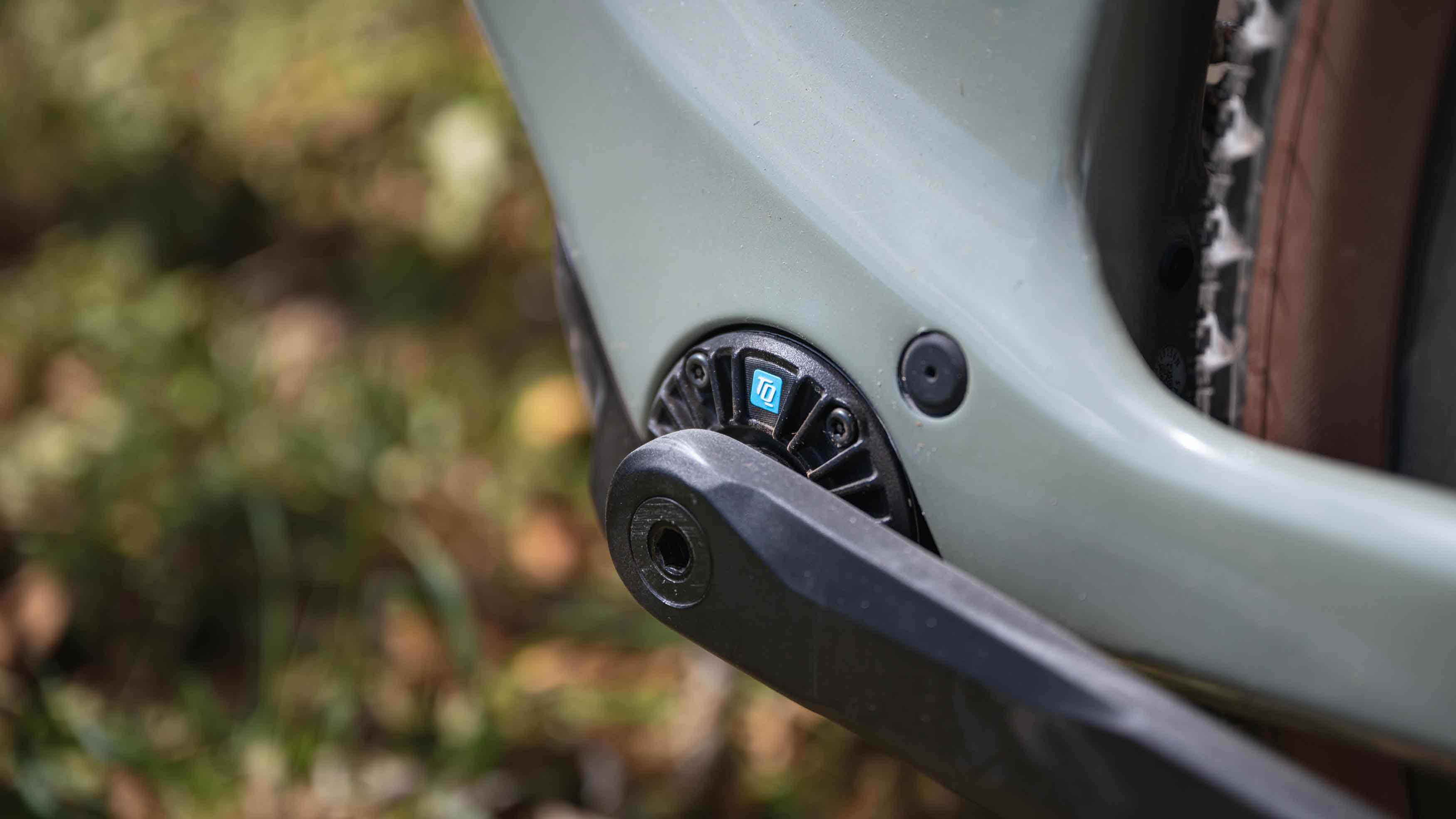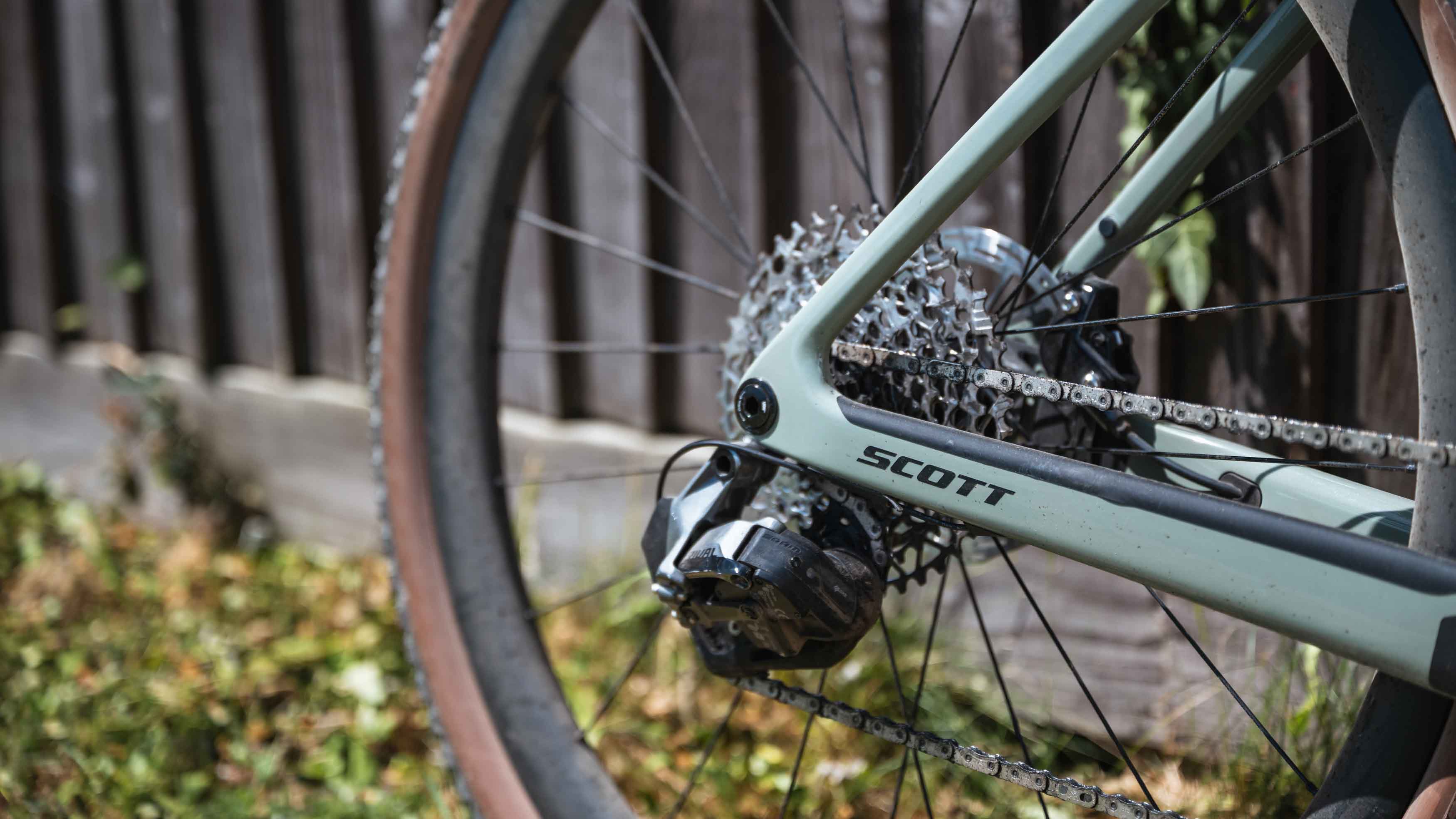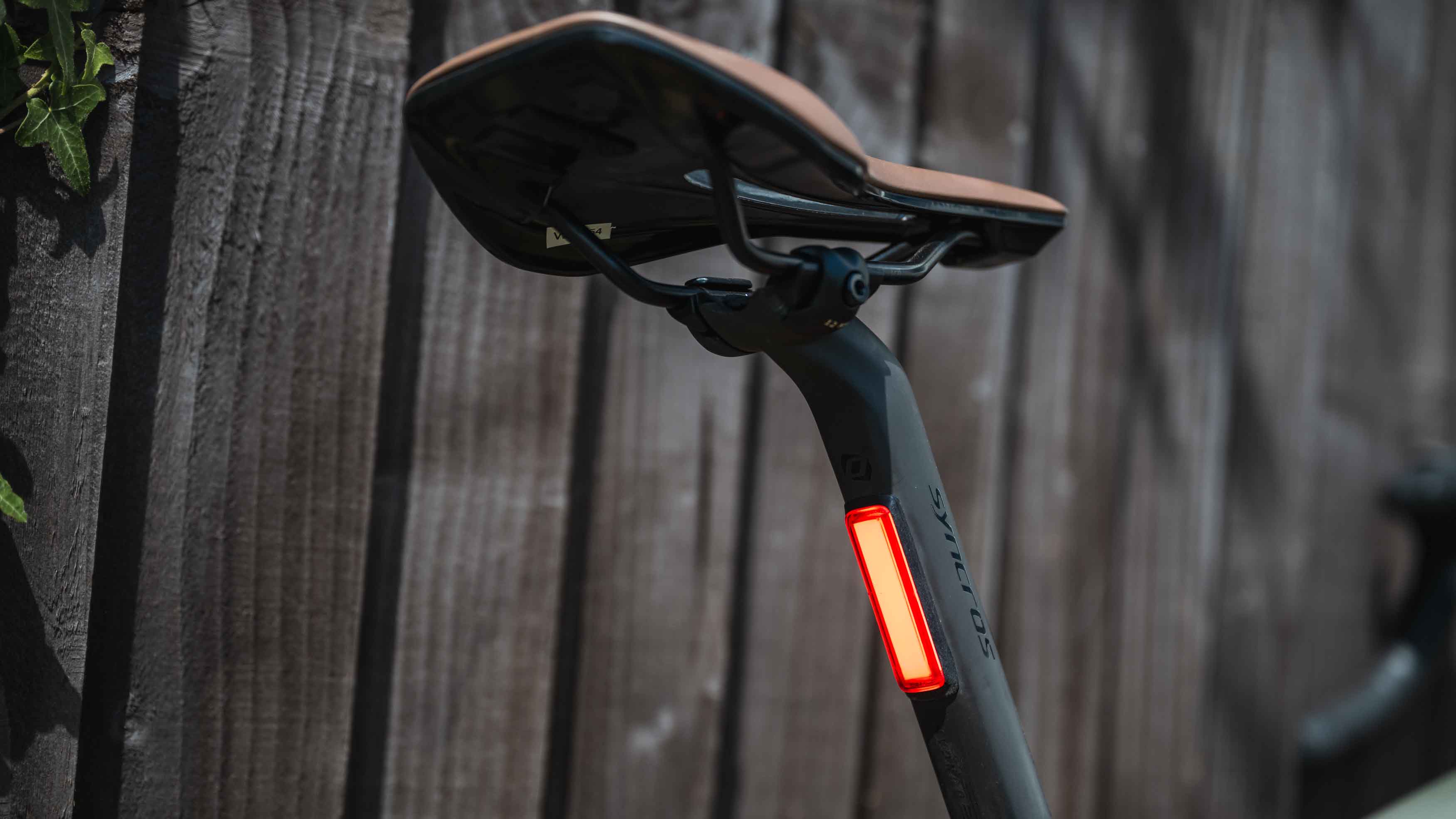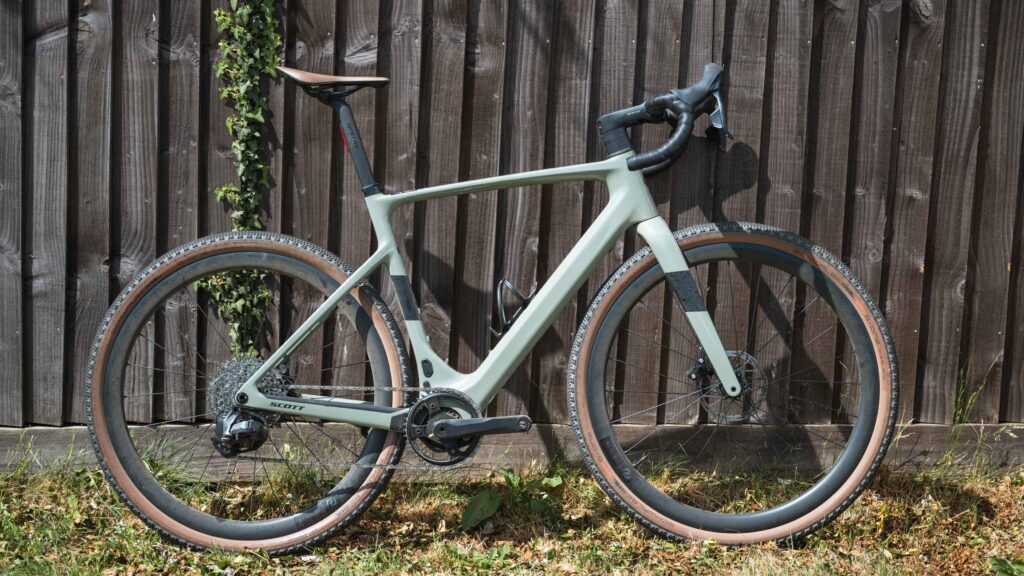I’ve always been a little sceptical of even the best e-bikes. On the road, they’ve always felt compromised by regulation; quick to help up to 25kph, but then you’re left muscling around a 15kg frame with no more assistance, just as things get fun.
But stick that same tech on a gravel bike, where the average pace is lower and the terrain more demanding, and suddenly, electric assist starts to make a lot more sense.
That suspicion turned into conviction when I started riding the Scott Solace eRIDE 20. With clean, integrated looks that barely hint at its electrified heart, this full-carbon machine transformed my usual loops into something far more exhilarating. It’s powerful when you need it, composed on the rough stuff, and capable of soaking up longer, more adventurous rides without wearing you down.
From its smooth TQ motor and hidden display to the meaty 50mm tyres and SRAM Rival groupset, this is a purpose-built gravel e-bike that rides like a premium analogue machine… until you hit a climb and feel the extra watts kick in. It’s not perfect, but it might be the most fun I’ve had on a bike all year.
Scott Solace eRIDE 20 review
Price and availability
The Scott Solace eRIDE 20 costs £6,999 (~$9,404/AU$14,555.89) and is available from Scott via its network of dealers. Visit Scott for more information on availability in your region.
Design and build quality
(Image credit: Matt Buckley)
From the first glance, the Solace eRIDE 20 doesn’t scream ‘e-bike’ – and that’s exactly the point. The TQ HPR50 motor is tucked so cleanly into the carbon frame that you’d mistake it for a traditional high-end gravel bike. The 360 Wh battery is concealed in the downtube with the motor integrated into the bottom bracket.
There’s very little else to suggest this is an e-bike, aside from the small display on the top tube near the handlebars. There’s plenty of indications to suggest this is a premium bike however; integrated cables are concealed in the carbon bars, a rear light is built into the seat post and is powered by the internal battery so you’ll never be caught out.
Motor

(Image credit: Matt Buckley)
The TQ HPR50 is at the heart of the Solace eRIDE 20 and offers 250w of assistance with a peak of 300w for those really steep climbs. Coupled with 50nm of torque, it feels like an encouraging shove rather than needing to hang on for dear life. The 360Wh battery is good for around 100km of riding with 1300m of climbing. If you need to go further, there’s a 160Wh range extender available that mounts to a bottle cage to provide a bit more juice.
The motor has three modes, Eco, Mid and High, all of which offer different levels of assistance that blend in as you’re riding rather than delivering full power from the first pedal stroke. Riding on High is an absolute hoot, flying between trees and threading your way down singletrack at obscene speeds but be warned, you’ll be out of battery much sooner and in for a long ride home.
Assistance modes are selected using a small screen integrated into the top tube, which displays range, speed, battery life remaining and power. It’s unobtrusive and I much prefer it to a standalone unit mounted on the handlebars.
Assistance cuts out at 25kph as per European legislation but in reality this is plenty; I average about 23kph on my rides so rarely found myself going faster without assistance.
Performance

(Image credit: Matt Buckley)
Take it on a fire road, some rooty singletrack, or just the back lanes of your favourite countryside loop, the Solace feels composed and confidence-inspiring. The geometry hits a sweet spot between sporty and stable, with just enough slack in the head angle for descending confidence, but not so much that you lose agility in corners.
It cuts a similar silhouette to an endurance road bike, albeit with slightly more reach for added stability over the rough stuff. It gets close to feeling like a normal bike, but there is always an underlying weight that isn’t completely hidden. Throwing the bike through tight and technical terrain does expose the added heft from the motor and battery, but that’s a minor complaint.
Components-wise, it’s decked out with 12spd SRAM Rival AXS, which is normally fully wireless, but in this guise it takes its power from the battery powering the motor, so you can charge everything with a single cable.

(Image credit: Matt Buckley)
Shifts are fast and accurate and happen without fuss, even under load. It’s a long-term gripe I’ve had with the last generation of SRAM levers, that I find it traps my fingers behind the shift paddle when braking hard. Riders with smaller hands might not have this issu,e but it’s a design quirk that has put me off riding SRAM on my personal bikes.
The actual braking is great, powerful and modulated with minimal squealing in wet weather.
Any discussion surrounding gravel cycling cannot not mention wheel and tyre options. The Solace eRIDE 20 is fitted with a pair of Schwalbe G-One Overland tyres in 50mm mounted to Scott’s own design carbon wheelset. The benefits of huge tyres is that you can run them at super low pressures for huge amounts of grip and comfort. This usually comes at the expense of speed, but with an extra 250W on tap those concerns are gone.
Verdict

(Image credit: Matt Buckley)
The Solace eRIDE 20 is a compelling package, pairing power with control and confidence inspiring geometry to help you tackle more technical terrain, as well as helping you ride faster and further. In my eyes, electrification of a gravel bikes makes much more sense than on the road and this bike confirms it. It’s huge fun on pretty much all terrain.
Also consider
The Specialized Creo almost defined the e gravel bike category and continues to do so. Using their in house motor and battery tech, the Specialized is packed with tech but you will pay a premium for it – the similarly specced Turbo Creo 2 Expert is £7,500 (~$10,082.34/ AU$ 15,609.30).
If you need something more road oriented, the Trek Domane+ SLR6 Pro can fit up to 40mm tyres yet stil packs a 360Wh battery and 250w motor. It uses Shimnao 105 Di2 for transmission duties and costs £8,000 (~$10,752.76/ AU$ 16,650.40).


